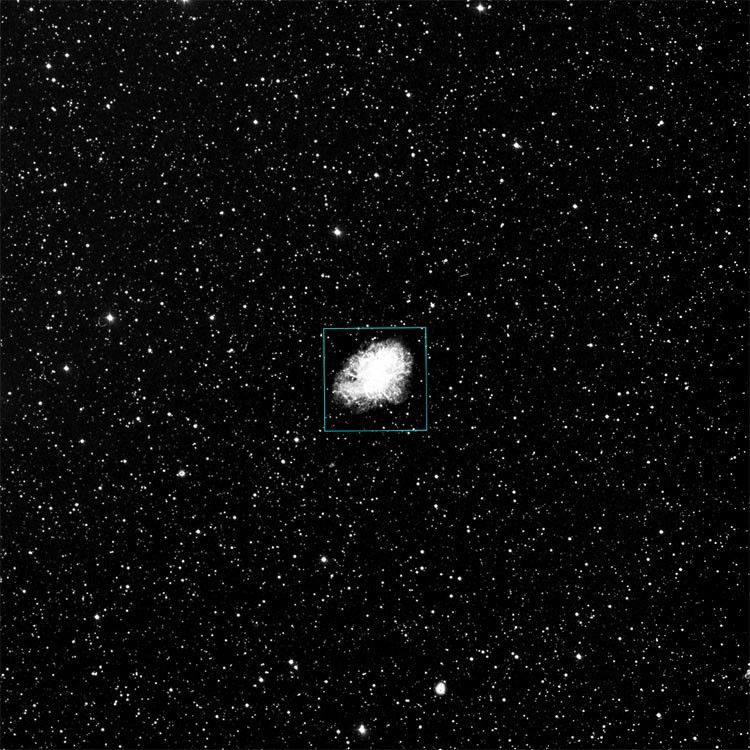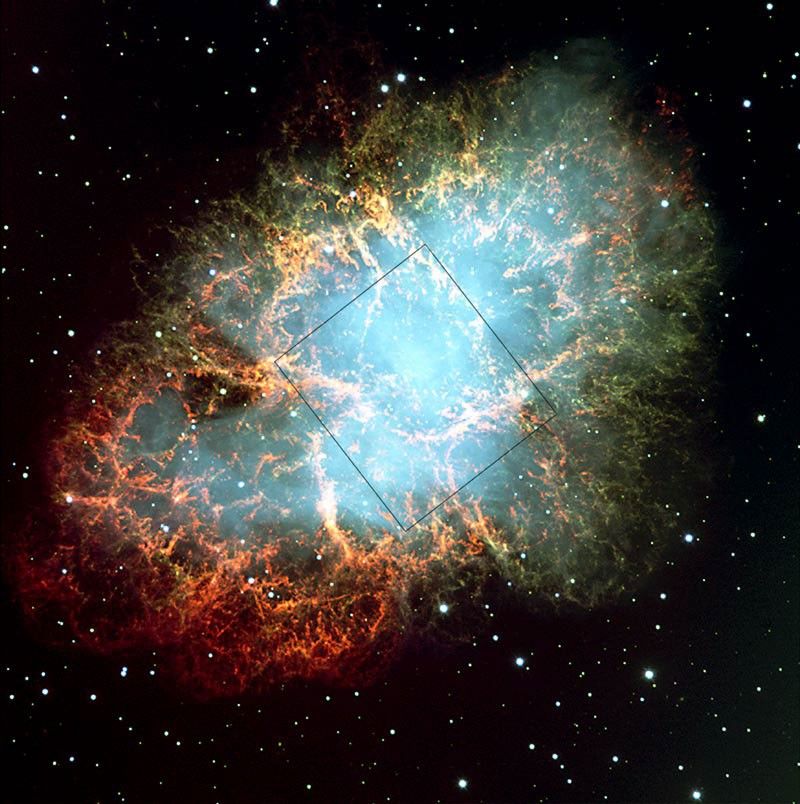1 min read
Peering into the Heart of the Crab Nebula

In the year 1054 A.D., Chinese astronomers were startled by the appearance of a new star, so bright that it was visible in broad daylight for several weeks. Today, the Crab Nebula is visible at the site of the "Guest Star". Located about 6,500 light-years from Earth, the Crab Nebula is the remnant of a star that began its life with about 10 times the mass of our own Sun. Its life ended on July 4, 1054 when it exploded as a supernova. In this image, NASA's Hubble Space Telescope has zoomed in on the center of the Crab to reveal its structure with unprecedented detail.
The Crab Nebula data were obtained by Hubble's Wide Field and Planetary Camera 2 in 1995. Images taken with five different color filters have been combined to construct this new false-color picture. Resembling an abstract painting by Jackson Pollock, the image shows ragged shreds of gas that are expanding away from the explosion site at over 3 million miles per hour.
The core of the star has survived the explosion as a "pulsar," visible in the Hubble image as the lower of the two moderately bright stars to the upper left of center. The pulsar is a neutron star that spins on its axis 30 times a second. It heats its surroundings, creating the ghostly diffuse bluish-green glowing gas cloud in its vicinity, including a blue arc just to its right.
The colorful network of filaments is the material from the outer layers of the star that was expelled during the explosion. The picture is somewhat deceptive in that the filaments appear to be close to the pulsar. In reality, the yellowish green filaments toward the bottom of the image are closer to us, and approaching at some 300 miles per second. The orange and pink filaments toward the top of the picture include material behind the pulsar, rushing away from us at similar speeds.
The various colors in the picture arise from different chemical elements in the expanding gas, including hydrogen (orange), nitrogen (red), sulfur (pink), and oxygen (green). The shades of color represent variations in the temperature and density of the gas, as well as changes in the elemental composition. These chemical elements, some of them newly created during the evolution and explosion of the star and now blasted back into space, will eventually be incorporated into new stars and planets. Astronomers believe that the chemical elements in the Earth and even in our own bodies, such as carbon, oxygen, and iron, were made in other exploding stars billions of years ago.
Kris Davidson (U. Minn.) led the research team of William P. Blair (JHU), Robert A. Fesen (Dartmouth), Alan Uomoto (JHU), Gordon M. MacAlpine (U. Mich.), and Richard B.C. Henry (U. Okla.) in the collection of the HST data. The Hubble Heritage Team created the color image from black and white data processed by Dr. Blair.
About the Object
- R.A. PositionR.A. PositionRight ascension – analogous to longitude – is one component of an object's position.05h 34m 31.96s
- Dec. PositionDec. PositionDeclination – analogous to latitude – is one component of an object's position.22° 0' 52.09"
- ConstellationConstellationOne of 88 recognized regions of the celestial sphere in which the object appears.Taurus
- DistanceDistanceThe physical distance from Earth to the astronomical object. Distances within our solar system are usually measured in Astronomical Units (AU). Distances between stars are usually measured in light-years. Interstellar distances can also be measured in parsecs.The distance to NGC 1952 is 6500 light-years (2.0 kpc).
- DimensionsDimensionsThe physical size of the object or the apparent angle it subtends on the sky.The image is 1.6 arcminutes along the bottom (3.0 light-years or 0.9 pc).
About the Data
- Data DescriptionData DescriptionProposal: A description of the observations, their scientific justification, and the links to the data available in the science archive.
Science Team: The astronomers who planned the observations and analyzed the data. "PI" refers to the Principal Investigator.Principal Astronomers: K. Davidson (U. Minn., Project Principal Investigator), W.P. Blair (Johns Hopkins), R.A. Fesen (Dartmouth), A. Uomoto (Johns Hopkins), G.M. MacAlpine (U. Mich.), and R.B.C. Henry (U. Okla.). - InstrumentInstrumentThe science instrument used to produce the data.HST>WFPC2
- Exposure DatesExposure DatesThe date(s) that the telescope made its observations and the total exposure time.January 1995, April 1995, Exposure Time: 10 hours
- FiltersFiltersThe camera filters that were used in the science observations.F502N ([O III]), F547M (Stromgren y), F656W (H-alpha), F658N ([N II]), and F673W ([S II])
- Object NameObject NameA name or catalog number that astronomers use to identify an astronomical object.Crab Nebula, M1, NGC 1952
- Object DescriptionObject DescriptionThe type of astronomical object.Supernova Remnant
- Release DateJune 1, 2000
- Science ReleasePeering into the Heart of the Crab Nebula
- Credit

Green: F502N ([O III]) Blue: F547M (Stromgren y) Orange: F656W (H-alpha) Red: F658N ([N II]) Pink: F673W ([S II])
Share
Details
Claire Andreoli
NASA’s Goddard Space Flight Center
Greenbelt, Maryland
claire.andreoli@nasa.gov

































